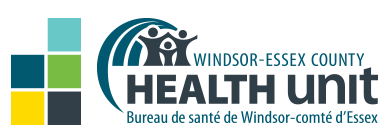Board of Health Meeting Documents
The Board of Health meeting documents are listed chronologically by meeting date below.
-
May 15, 2024 - June 14, 2024, Communications Update
Information Report -
Potassium Iodide (KI) Pill Replacement Program - Nuclear Preparedness Program
Information Report -
Q2 Board of Health Effectiveness Survey Summary
Information Report -
Strategic Plan Q2 Progress Report
Information Report -
2024 Annual Service Plan - Auxilary Q2 Status Report
Information Report -
2024 Q2 Strategic Plan Progress Report
Information Report -
July 15, 2024 - August 14, 2024, Communications Update
Information Report -
June 15, 2024 - July 14, 2024, Communications Update
Information Report
-
2023 Annual Audited Financial Statements Recommendation
Auxiliary Report -
Windsor Essex Food Strategy
Auxiliary Report -
CMOH Annual Report 2023
Correspondence -
Declaring gender-based violence, intimate partner violence, and family violence a provincial epidemic.
Correspondence -
HKPR Support for CMOH 2023 Annual Report
Correspondence -
Sudbury and Districts Public Health - Support for Bill C-322
Correspondence -
April 15, 2023 - May 14, 2024, Communications Update
Information Report -
ISPA Implementation Update - Secondary School Students
Information Report -
Enforcement and Compliance Activities in Comprehensive Tobacco Control
Information Report -
ISPA Enforcement Update - Elementary School Students
Information Report
-
Peterborough Public Health - Recommendation for Federal Restrictions on Nicotine Pouches
Correspondence -
Letter to Premier: re: Recommendations for Government Regulation of Nicotine Pouches
Correspondence -
KFL&A Letter of Recommendation for the Restriction of Sale of Nicotine Pouches
Correspondence -
2023 CMOH Annual Report
Correspondence -
HKPR Letter Re: Private Member’s Bill C-322 – National Framework for a School Food Program Act
Correspondence -
Implementation of the Ontario Naloxone Program 2023
Information Report -
Zoonotic and Vector-borne Disease Surveillance Program
Information Report

